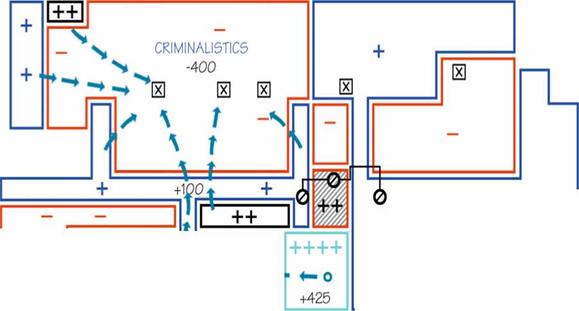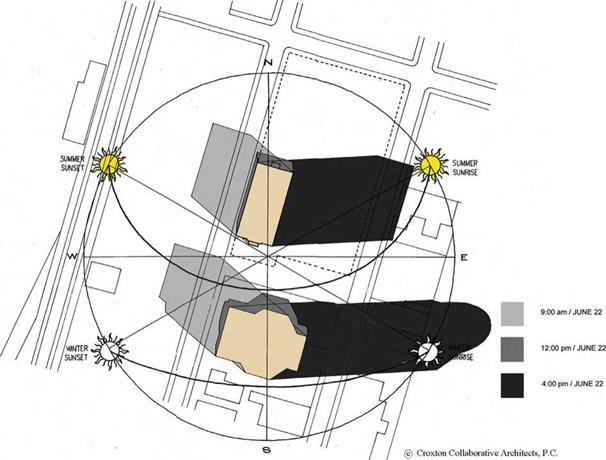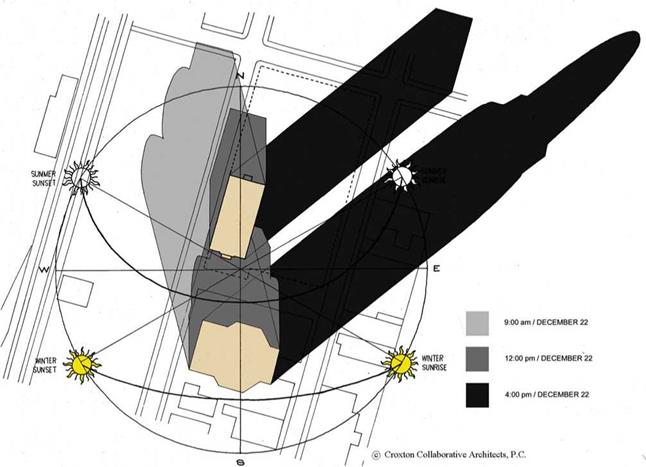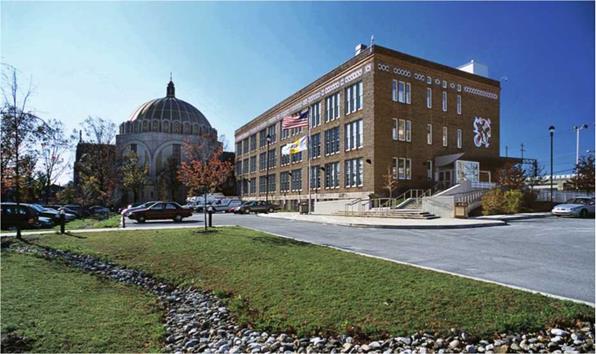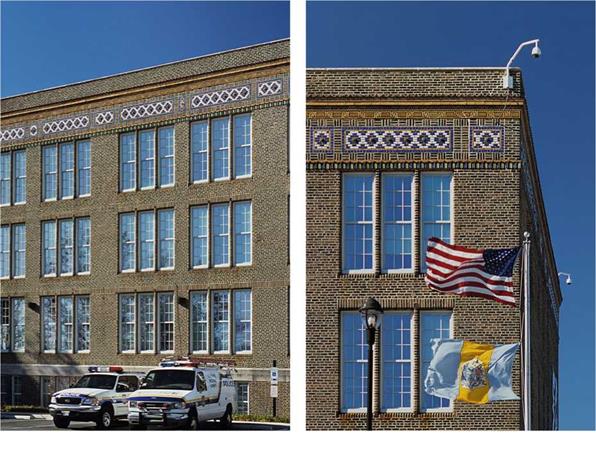Philadelphia, USA
2003
Croxton Collaborative Architects P C.
www. croxtoncollaborative. com
The Philadelphia Police Department Forensic Science Center is located in a formerly derelict and abandoned school building (Fig. 1). The art deco style facade was constructed in 1929 from a concrete frame infilled with brickwork facades and industrial style fenestration (Figs. 5, 6, 7).
The challenges facing the design team were numerous. The City of Philadelphia and its project partners demanded that the Forensic Science Center should provide a model for sustainable design and construction within the city. The project was to be competitively tendered with limited financial resources, supplemented by grants. Furthermore, the existing 2.16 acre site was completely hard paved contributing to frequent incidents of sewage outfalls into the Delaware River during storm surges. By utilising a Growing Greener grant from Pennsylvania DEP the site was
re-landscaped to increase ground permeability and improve storm water absorption (Fig. 5). This would improve the water quality of the nearby river. Modelling and simulation programmes for power and lighting were implemented at the design stage (Figs. 2, 3) with the goal of reducing energy consumption in the high usage environment of the science laboratories. HVAC loads were minimised by providing high building insulation levels and a “building within a building” strategy for areas requiring the highest air qualities. Access to mechanical and electrical infrastructure was isolated outside the laboratory areas including a 15 kW photovoltaic array mounted on the roof. The successful completion of the project has fulfilled the city’s twin aspirations of restoring a neglected gem of a building, and providing a beacon for regeneration in Northern Philadelphia.
|
|
|
|
|
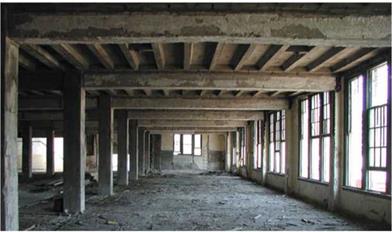
50 Philadelphia Forensic Science Center | Philadelphia | USA | Fig. 1 above | Fig. 2 opposite top | Fig. 3 opposite below
J. A. Flannery, K. M. Smith, Eco-UrbanDesign, DOI 10.1007/978-94-007-0369-8_6, © Springer Science+Business Media B. V. 2011
|
|
|
|
|
|
|
|
|
|
The state of the art forensic laboratories are provided over four floors including a basement within the restored 44,000 square feet building. Facilities include:
• A firearms unit with a shooting range for ballistics analysis.
• A crime scene unit for 24 hours per day crime scene evidence gathering.
• Chemistry laboratories for drug analysis.
• Criminalistic and DNA laboratories for hair, fibre and blood analysis.
All crime scene evidence with the exception of homicide crimes are processed through the facility for the City of Philadelphia (Figs. 4, 6 to 8). Careful selection of the materials used in the project eliminated the use of PVC pipework. Refrigeration and mechanical units are all free of chlorofluorocarbons (CFCs). Rapidly renewable or recycled materials were used in the wall finishes and flooring. The design team were also mindful of the health and well-being of the scientists working in the very demanding field of forensic science.
For example, extreme levels of brightness are required in the examination areas, consequently, high energy efficient fluorescent lighting was used throughout. The large air volume movements required by laboratory fume hoods also put demands on the energy required within the facility (Fig. 10). Despite these challenges the careful modelling and considered design was able to achieve measured improvements over codes in place at the time of construction, for example:
• 72% reduction in total annual source energy
• 69% reduction in 25 year C02 emissions.
• 67% reduction in total annual utility bill
• 65% S02 and NOx 25 year emmision reductions (Acid rain and Ozone smog).
• 61% reduction in annual peak electrical demand.
• Cumulative payback of strategies in 2.2 years. The Forensic Science Center received the American Institute of Architects ‘Cote Top Ten’ Award for 2006 and a Philadelphia Sustainability Award for 2007.
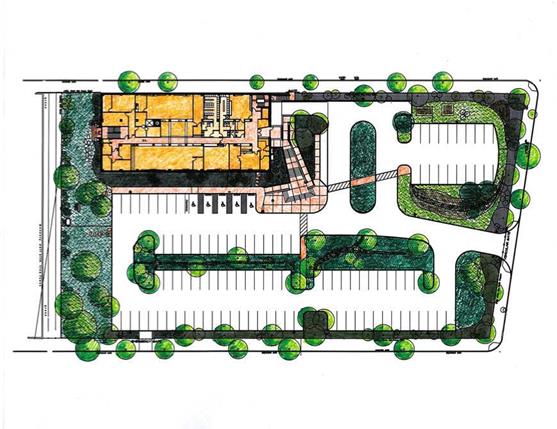
|
|
|
|
 |
